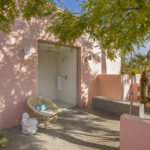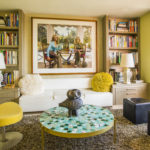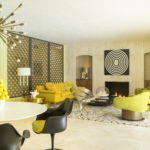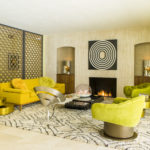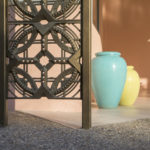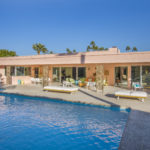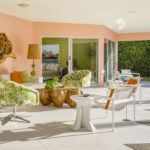Gloriously Pink in Palm Springs, $3M
Author:Philip FerratoOriginally built in 1964, the well-hedged Haymond House in the Old Las Palmas neighborhood of Palm Springs has long been a pilgrimage site for fans of Alfred Frey, the Swiss-born architect who moved to the desert in 1939 and never left. Frey, along with various professional partners (in this case, the architect Robson Chambers) is responsible for what we think of as the Desert Modern Style. Fast-forward to 2016 when Atlanta-based interior designer Bill Stewart purchased it and embarked on a months-long renovation, one extensively covered in Palm Springs Life, where we learn it was originally mustard colored. Pink is better; Williams is a master at color and texture and what sets this house apart (at least for now) is the lack of white paint. Plus details like the way the polished terrazzo meets the unfinished aggregate of the pool deck in a sawtooth pattern in the lanai.
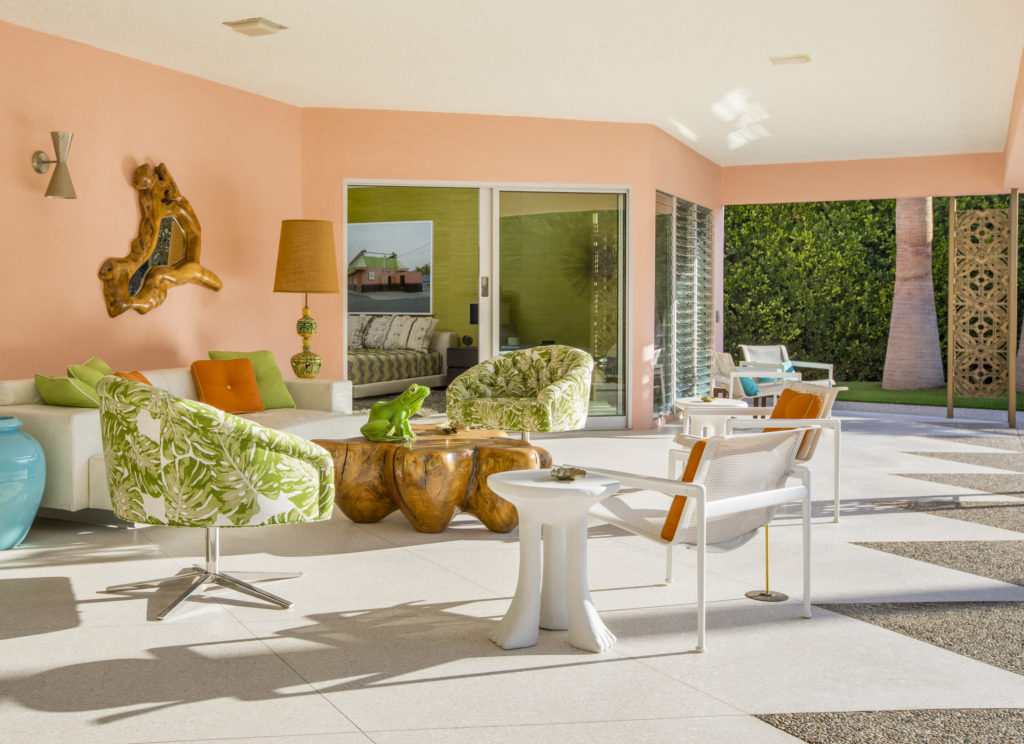
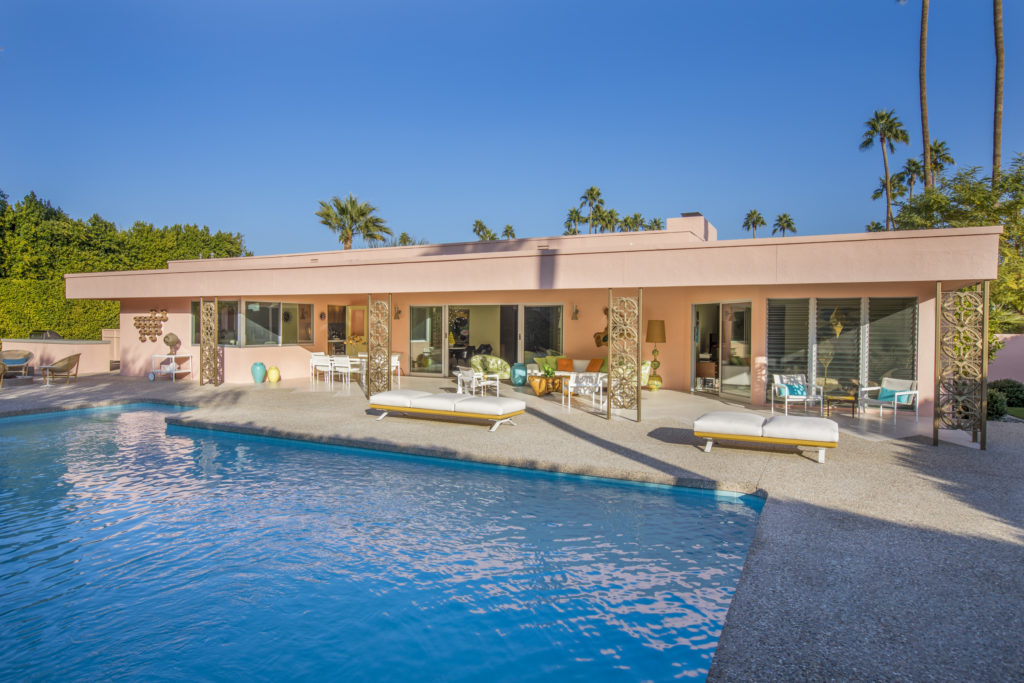
About those modular screens– they were originally designed by John DeKoven Hill (1920-1996) who for decades was Frank Lloyd Wright’s principal in-house interior designer at Taliesen. From 1953 to 1964, Hill was the editor of the (then) hugely influential House Beautiful magazine, and responsible for the magazine’s annual Pacesetter program, intended to feature the magazine’s advertisers in new construction. In 1958, Hill began designing the deeply Wright-influenced Corbett house near Cincinnati (Mr. Corbett was head of the Nutone Corporation, an electrical appliance manufacturer and House Beautiful advertiser) and in Wright’s classic and highly decorative style, Hill incorporated these modular elements throughout to filter out bright sunlight.
The Corbett house appeared as the 1960 Pacesetter House, a tribute from a protege to his master (Wright died in 1959) and reflecting back to Wight’s own master, the architect Louis Sullivan, who had pioneered the use of precast decorative elements in his own projects. Manufactured by another House Beautiful advertiser, the Schmidt Ornamental Iron Works in Evanston, Illinois, we can presume that Frey and/or Chambers, like so many architects, saw the Corbett house in the magazine and ordered the panels from a catalogue; examples can still be found on Etsy in vintage condition, not immaculately buffed and bronzed.
And while it’s fascinating to trace a link from the desert back to the Chicago of Louis Sullivan, there was no attempt here to create an “organic” structure in the manner of Wright or Hill. The modular panels are deployed in a way that brings Frey and Chambers much closer to the contemporaneous Hollywood Regency style that was flourishing a few hours to the west.
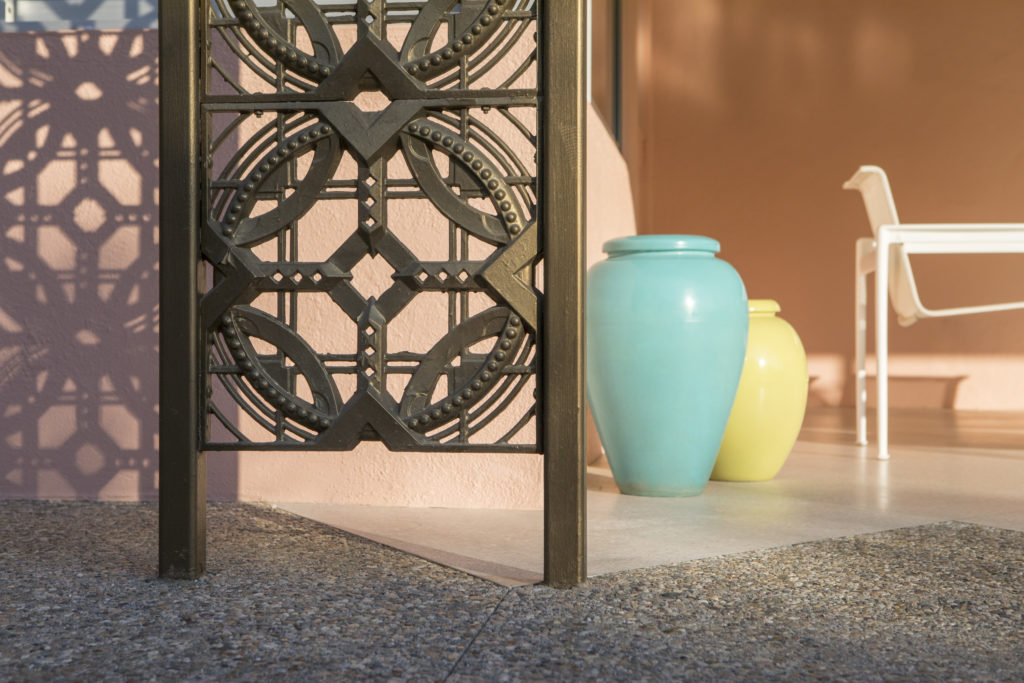
Inside, the adroit color story is all about soft, off-greens and neutrals. The original wood screens in the living room were warped, so Stewart had them reproduced.
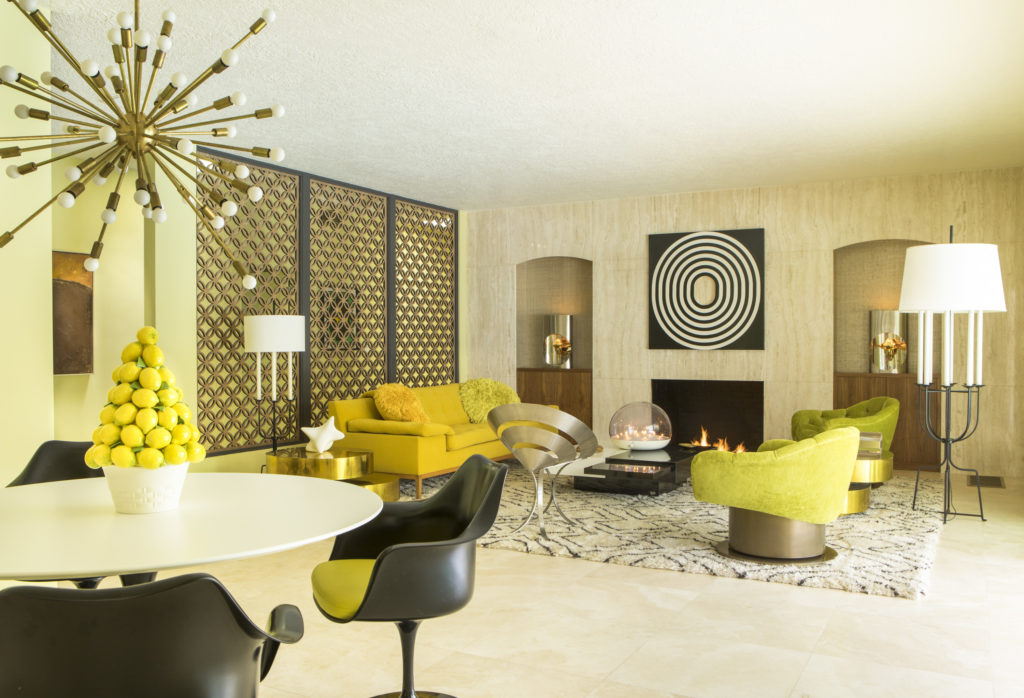
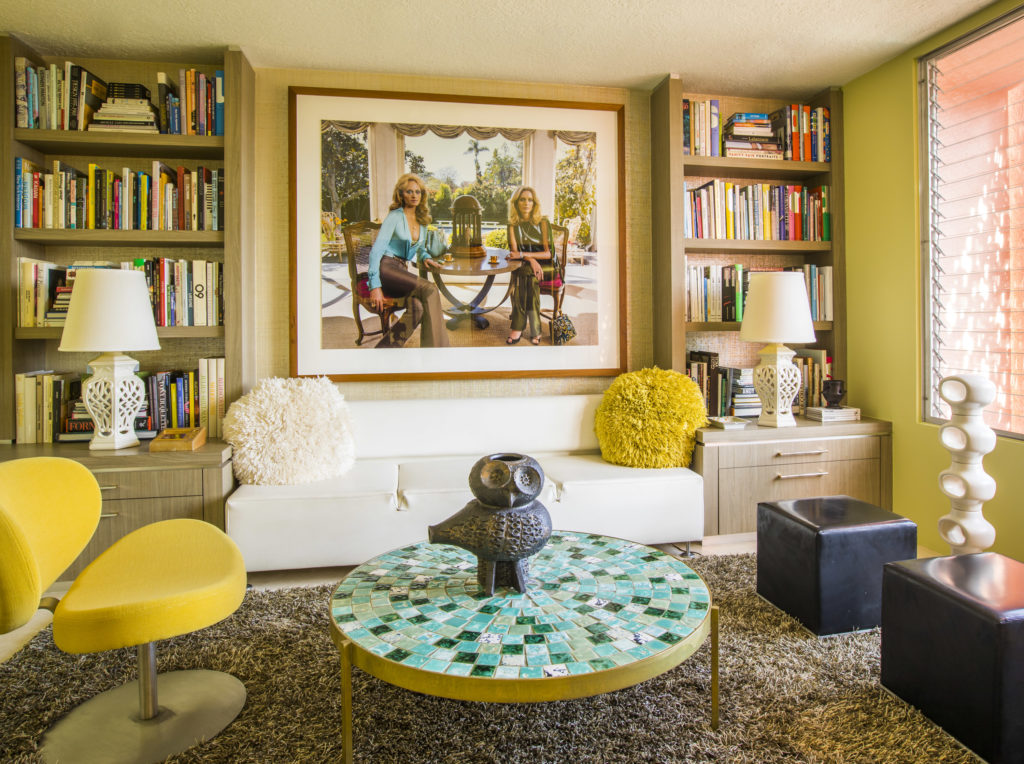
One of the subtle changes Stewart made was a an outdoor show “room” off the master suite bath.
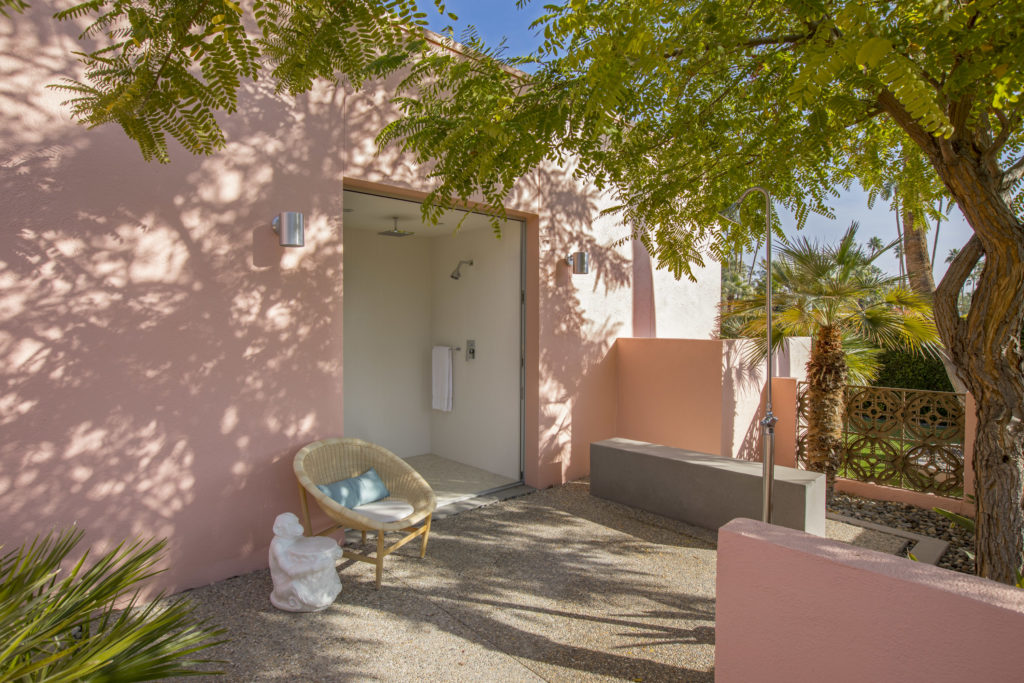
More: Go to the listing for additional images and details of this extraordinary property. Represented by the TKK Represents team at Compass.
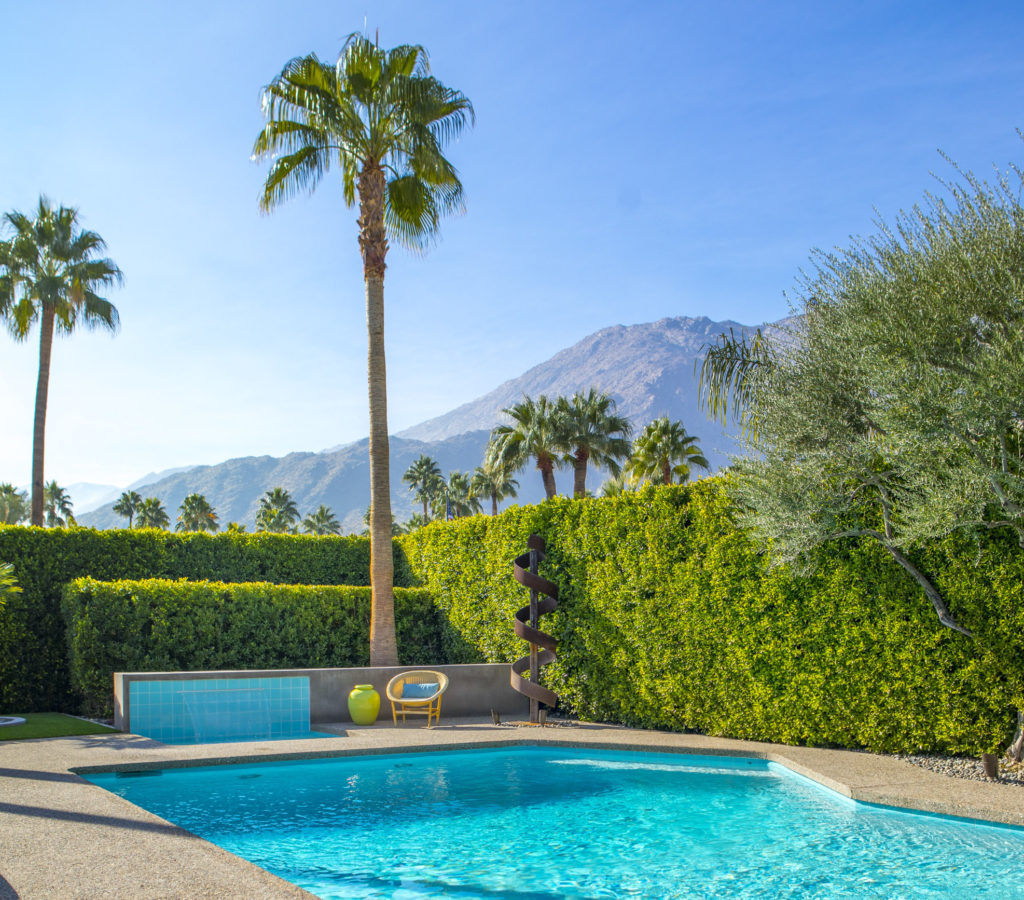
Photo Credit: John Ellis for Compass unless otherwise noted


